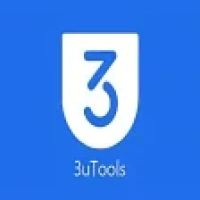
Latest Version
1.0
June 09, 2024
Mustafa Jabbar
Desktop Enhancements
Windows
4.85 MB
54,830
Free
Windows 7
Report a Problem
More About Bijoy Bayanno
Bijoy Bayanno Download
Bijoy Bayanno is an iconic piece of software that has played a pivotal role in the digital landscape of Bangladesh. Created by Mustafa Jabbar, a pioneer in Bangla computing, Bijoy Bayanno is more than just a typing tool; it is a cultural phenomenon that has significantly contributed to the proliferation of the Bangla language in the digital world.Origins and Development
The story of Bijoy Bayanno begins in the early 1980s, when the digital revolution was starting to take shape globally. Mustafa Jabbar recognized the potential of personal computing and the need for software that could cater to the linguistic needs of Bangladesh. At a time when English was the dominant language of computing, there was a clear void for Bangla-language software.
In 1988, Jabbar developed the Bijoy keyboard layout and software, which became the first Bangla typing software. The name "Bijoy" translates to "victory" in English, symbolizing a triumph for the Bangla language in the realm of computing. Over the years, the software has evolved, with Bijoy Bayanno being one of its most significant iterations. Released in 2009, Bijoy Bayanno became synonymous with Bangla typing software, widely adopted across Bangladesh and by Bangla-speaking communities worldwide.
Features and Functionality
Bijoy Bayanno is renowned for its user-friendly interface and robust features. The software supports both Unicode and non-Unicode fonts, making it versatile for various applications. Some key features include:
Phonetic Typing: Bijoy Bayanno offers a phonetic typing system that allows users to type Bangla words using the Roman alphabet. This feature is particularly beneficial for those who are more comfortable with the English keyboard layout but need to type in Bangla.
Traditional Keyboard Layouts: For users familiar with traditional Bangla typing methods, Bijoy Bayanno supports the Bijoy and Probhat keyboard layouts, providing a seamless typing experience.
Font Compatibility: The software comes with a wide range of Bangla fonts, ensuring that users have the flexibility to choose the best font for their needs. This is especially important for publishing and professional work where font aesthetics and readability are crucial.
Word Processing Features: Bijoy Bayanno includes comprehensive word processing capabilities, allowing users to create and edit documents efficiently. It supports various file formats and integrates smoothly with popular word processors like Microsoft Word.
Impact on Bangla Language and Culture
Bijoy Bayanno has had a profound impact on the Bangla language and culture. Before its advent, typing in Bangla was a cumbersome process that required specialized knowledge and equipment. Bijoy Bayanno democratized Bangla computing by making it accessible to the masses. This accessibility has had several significant implications:
Education: Bijoy Bayanno has become an essential tool in the education sector. Schools, colleges, and universities across Bangladesh use it for teaching and administrative purposes. It has enabled students to produce academic work in their native language, fostering a deeper connection with their cultural heritage.
Publishing and Media: The software has revolutionized the publishing industry in Bangladesh. Newspapers, magazines, and book publishers have embraced Bijoy Bayanno for its reliability and ease of use. This has led to a boom in Bangla-language content, enriching the literary and cultural landscape of the country.
Government and Administration: The adoption of Bijoy Bayanno in government offices and institutions has streamlined administrative processes. Official documents, reports, and correspondence are now commonly produced in Bangla, ensuring that the language remains at the forefront of national affairs.
Digital Communication: In the age of digital communication, Bijoy Bayanno has enabled Bangla speakers to express themselves online. Social media, blogs, and forums have seen a surge in Bangla content, allowing for greater representation and engagement of Bangla-speaking communities on the global stage.
Challenges and Criticisms
Despite its successes, Bijoy Bayanno has not been without its challenges and criticisms. One of the primary criticisms revolves around its reliance on non-Unicode fonts. While Bijoy Bayanno does support Unicode, its default use of non-Unicode fonts has created compatibility issues. Unicode is the global standard for text encoding, ensuring that text is consistently represented across different platforms and devices. The reliance on non-Unicode fonts can lead to display issues and inconsistencies, especially when sharing documents internationally.
Moreover, with the rise of other Bangla typing software like Avro Keyboard, Bijoy Bayanno faces stiff competition. Avro, which is free and open-source, has gained popularity for its intuitive phonetic typing and seamless Unicode support. This competition has spurred innovation but also highlighted the need for Bijoy Bayanno to continually adapt and improve.
The Future of Bijoy Bayanno
Looking ahead, the future of Bijoy Bayanno lies in its ability to innovate and address the evolving needs of its users. Here are some potential areas of development:
Enhanced Unicode Support: Strengthening Unicode support will ensure better compatibility and integration with global digital platforms. This will be crucial for maintaining relevance in an increasingly interconnected world.
Mobile and Cloud Integration: As mobile and cloud computing continue to dominate, Bijoy Bayanno could expand its presence in these areas. Developing mobile apps and cloud-based solutions will make the software more accessible and versatile.
Open-Source Collaboration: Embracing open-source principles could foster community-driven development and innovation. By allowing users to contribute to the software's development, Bijoy Bayanno could tap into a broader pool of talent and ideas.
Educational Initiatives: Continuing to support educational initiatives and partnerships will help in nurturing the next generation of Bangla typists and technologists. Providing resources, training, and support to educational institutions will be key to sustaining its impact.
Conclusion
Bijoy Bayanno stands as a testament to the transformative power of software in preserving and promoting language and culture. From its inception to its current form, it has bridged the gap between technology and tradition, enabling millions to connect with their linguistic heritage in the digital age. As it continues to evolve, Bijoy Bayanno will undoubtedly remain a cornerstone of Bangla computing, inspiring future innovations and ensuring that the Bangla language thrives in the digital era.
|
|
|
|





















 Games
Games Desktop Enhancements
Desktop Enhancements Social & Communication
Social & Communication DVD & Blu-ray
DVD & Blu-ray Security & Anti virus
Security & Anti virus Office & Business Tools
Office & Business Tools Videos & Editing
Videos & Editing System Tuning & Tools
System Tuning & Tools File Transfer and Networking
File Transfer and Networking Developer Tools
Developer Tools Travel & Navigation
Travel & Navigation Browsers & Plugins
Browsers & Plugins VPN
VPN Photo & Design
Photo & Design